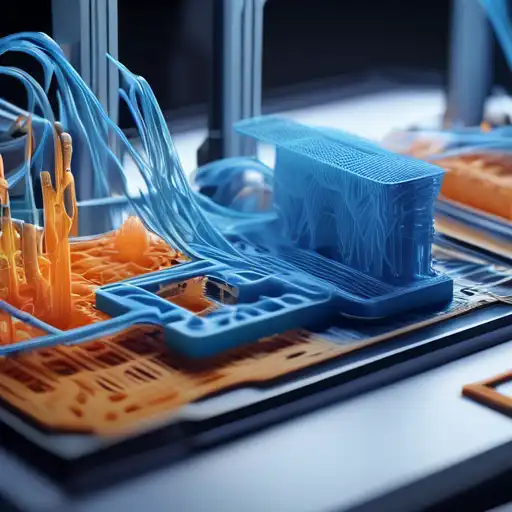The Revolutionary World of 3D Printing
3D printing, also known as additive manufacturing, is a process of creating three-dimensional objects from a digital file. This technology has been around since the 1980s but has gained significant attention in recent years due to its potential to revolutionize manufacturing, design, and even medicine.
How Does 3D Printing Work?
The process begins with a digital 3D model, which is then sliced into thin layers by specialized software. The 3D printer then builds the object layer by layer, using materials such as plastic, metal, or even biological materials. This method allows for complex shapes and structures that would be difficult or impossible to achieve with traditional manufacturing techniques.
The Benefits of 3D Printing
One of the most significant advantages of 3D printing is its ability to reduce waste. Traditional manufacturing often involves cutting away material to create a shape, whereas 3D printing adds material only where it's needed. This not only saves resources but also reduces costs. Additionally, 3D printing enables rapid prototyping, allowing designers and engineers to test and refine their ideas quickly.
Another benefit is customization. 3D printing makes it possible to create personalized products, from custom-fit shoes to tailored medical implants, at a fraction of the cost of traditional methods.
Applications of 3D Printing
The applications of 3D printing are vast and varied. In the medical field, it's used to create prosthetics, dental implants, and even organs. In architecture, 3D printing is used to create detailed models of buildings. The automotive and aerospace industries use it for prototyping and manufacturing parts. Even the food industry is experimenting with 3D printing to create intricate edible designs.
The Future of 3D Printing
As technology advances, the possibilities for 3D printing continue to expand. Researchers are exploring the use of new materials, such as graphene, which could lead to stronger, lighter, and more conductive products. There's also growing interest in 4D printing, where printed objects can change shape or function over time in response to environmental stimuli.
Despite its potential, 3D printing also faces challenges, including intellectual property concerns, the need for standardized materials, and the environmental impact of plastic waste. However, with ongoing research and development, these issues are likely to be addressed, paving the way for even broader adoption of this transformative technology.
For those interested in exploring 3D printing further, many communities and online platforms offer resources and tutorials to get started. Whether you're a hobbyist looking to create custom toys or a professional seeking to innovate in your field, 3D printing offers a world of possibilities.
